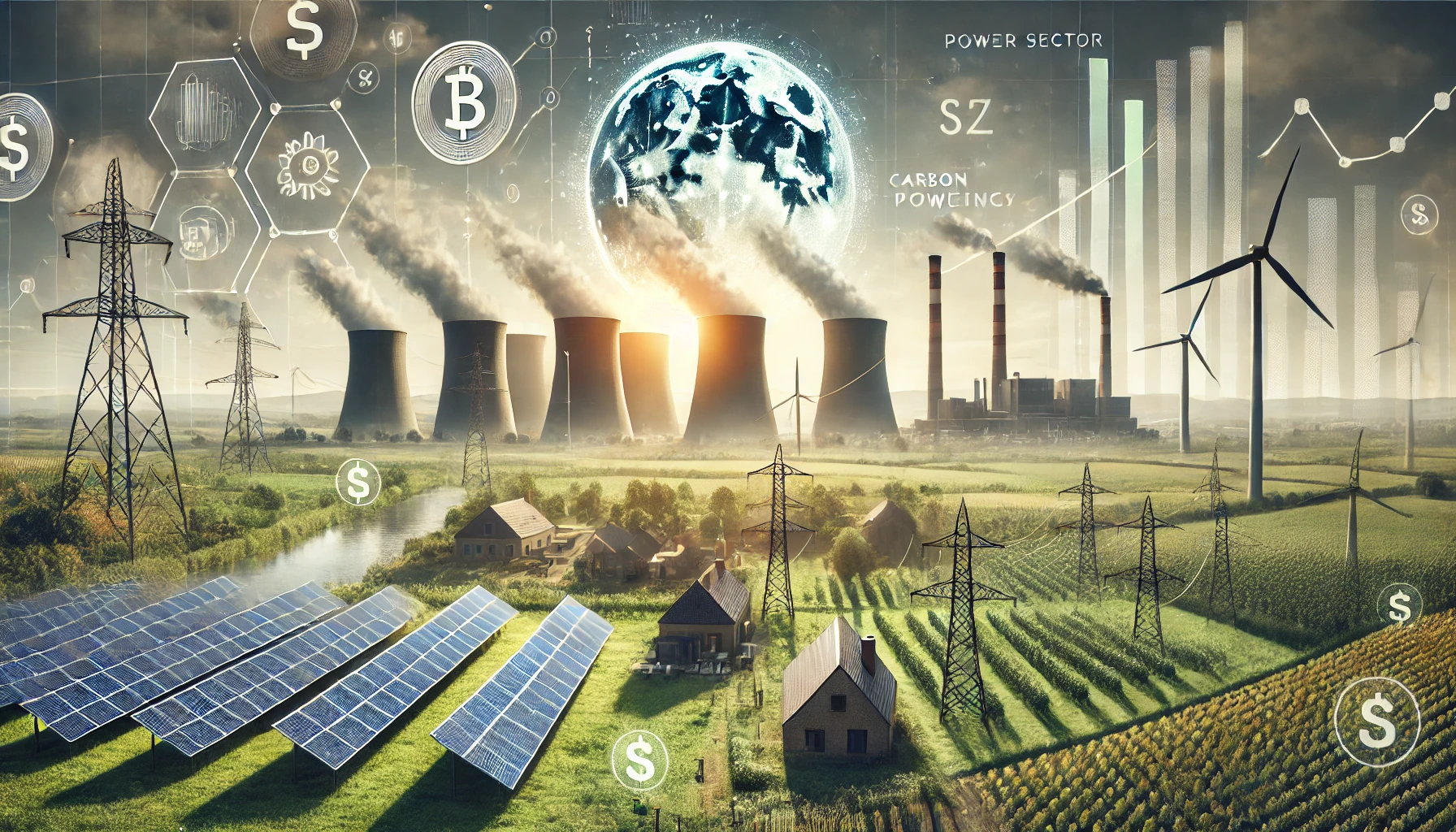Decarbonizing the Power Sector: The Role of Carbon Pricing in Global Climate Efforts
The World Bank's report emphasizes that carbon pricing is a powerful tool for reducing emissions and driving clean energy investments in the power sector, but it must be tailored to the unique economic and social challenges of low- and middle-income countries. Proper design and implementation can help these nations meet climate goals while fostering sustainable energy systems.

The World Bank's report on carbon pricing in the power sector highlights the critical role this mechanism plays in the global transition to net-zero carbon development. As the largest source of greenhouse gas emissions, the power sector is at the forefront of efforts to combat climate change. Carbon pricing, which includes instruments like carbon taxes and emissions trading systems (ETS), has emerged as one of the most effective tools to reduce emissions, foster investments in cleaner energy, and influence consumption patterns. The success of such initiatives in regions like the European Union and the United Kingdom shows the significant potential of carbon pricing in driving decarbonization. However, low- and middle-income countries (LICs and MICs) face additional challenges in implementing these measures due to financing constraints, energy security issues, and unique social and economic priorities.
Challenges of Implementing Carbon Pricing in Developing Nations
The report emphasizes that while carbon pricing has been embraced in more advanced economies, LICs and MICs must navigate a more complex landscape when introducing such policies. These countries face rapidly growing electricity demand, yet their power sectors are often constrained by insufficient supply and a heavy reliance on fossil fuels. At the same time, these nations are under pressure to align with international climate goals, particularly the Paris Agreement’s target to limit global temperature rise to 1.5°C. To achieve these goals, the power sector in LICs and MICs must increasingly rely on low-carbon energy sources, but doing so requires substantial policy support and financing mechanisms.
Unlocking the Potential of Carbon Pricing
Carbon pricing in the power sector can take various forms, but its success hinges on careful design and implementation. The report argues that when carbon pricing is well-designed, it can shift power generation toward lower-carbon sources, change the dispatch of electricity to prioritize cleaner plants, and incentivize consumers to alter their energy use. Moreover, carbon pricing can create new revenue streams for governments, which can then be reinvested in clean energy projects or used to mitigate the impact of higher energy prices on low-income households. The report cites examples from countries like China, South Africa, and Colombia, where carbon pricing mechanisms have been introduced with varying degrees of success. These early adopters demonstrate the potential of carbon pricing to facilitate the transition to cleaner energy while addressing economic and social concerns.
The Importance of Predictability and Credibility
One of the key challenges highlighted by the report is the need for carbon pricing systems to be predictable and credible. In capital-intensive sectors like power generation, both investors and policymakers require long-term visibility on carbon pricing to make informed decisions. If carbon prices fluctuate unpredictably, it can undermine investor confidence and slow the transition to low-carbon technologies. The report points out that carbon pricing not only influences the decisions of power generators but also has a cascading effect across the entire power sector value chain. This includes fuel suppliers, transmission operators, distribution companies, and even end consumers. For instance, a carbon price applied to power generation can lead to changes in fuel choices, such as switching from coal to natural gas or renewable energy sources. It can also influence how electricity is dispatched, with cleaner power plants being prioritized over higher-emission plants.
Tailoring Carbon Pricing to Diverse Power Sector Structures
In many LICs and MICs, however, the introduction of carbon pricing is complicated by the structure of the power sector. These countries often have power sectors that are either fully state-controlled or partially liberalized, which affects how carbon pricing mechanisms can be applied. For instance, in a vertically integrated monopoly, where a single state-owned entity controls the entire value chain, applying a carbon price may not yield the same results as it would in a fully liberalized market. The report suggests that carbon pricing policies must be tailored to the specific circumstances of each country’s power sector, ensuring that they are not seen as an additional burden but rather as a tool for driving decarbonization.
Addressing Social and Political Challenges
The report also addresses the social and political challenges associated with carbon pricing. In many countries, the introduction of carbon taxes or ETS can lead to higher electricity prices, which may disproportionately affect low-income households. Policymakers need to design carbon pricing systems that mitigate these impacts, such as by using revenue from carbon pricing to fund social protection programs or by providing subsidies for energy-efficient appliances. Additionally, the report stresses the importance of integrating carbon pricing with other policy instruments, such as renewable energy mandates, energy efficiency programs, and clean energy subsidies. By creating a comprehensive policy framework, governments can ensure that carbon pricing works in concert with other efforts to decarbonize the power sector.
Overall, the World Bank's report concludes that carbon pricing can be a powerful tool for reducing emissions in the power sector, but it must be implemented as part of a broader policy mix that addresses the specific challenges faced by LICs and MICs. These countries need to carefully consider where and how to apply carbon pricing in their power sectors to maximize its effectiveness while minimizing negative social and economic impacts. If designed and implemented well, carbon pricing can help LICs and MICs achieve their climate goals, attract investment in clean energy, and create more sustainable power systems for the future.
- FIRST PUBLISHED IN:
- Devdiscourse










